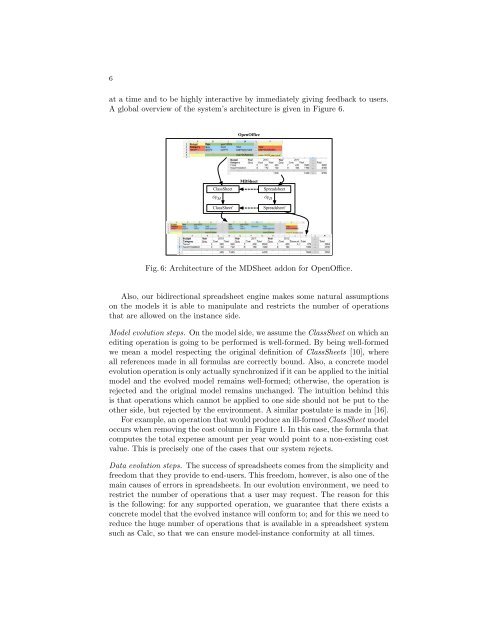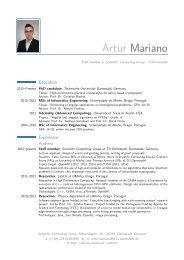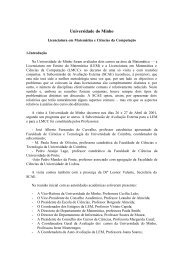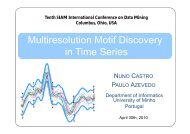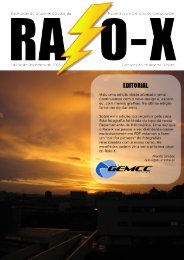Spreadsheet notoriously
Bidirectional Transformation of Model-Driven Spreadsheetsâ - ALFA
Bidirectional Transformation of Model-Driven Spreadsheetsâ - ALFA
- No tags were found...
Create successful ePaper yourself
Turn your PDF publications into a flip-book with our unique Google optimized e-Paper software.
6<br />
at a time and to be highly interactive by immediately giving feedback to users.<br />
A global overview of the system’s architecture is given in Figure 6.<br />
OpenOffice<br />
ClassSheet<br />
Op M<br />
ClassSheet'<br />
MDSheet<br />
<strong>Spreadsheet</strong><br />
Op D<br />
<strong>Spreadsheet</strong>'<br />
Fig. 6: Architecture of the MDSheet addon for OpenOffice.<br />
Also, our bidirectional spreadsheet engine makes some natural assumptions<br />
on the models it is able to manipulate and restricts the number of operations<br />
that are allowed on the instance side.<br />
Model evolution steps. On the model side, we assume the ClassSheet on which an<br />
editing operation is going to be performed is well-formed. By being well-formed<br />
we mean a model respecting the original definition of ClassSheets [10], where<br />
all references made in all formulas are correctly bound. Also, a concrete model<br />
evolution operation is only actually synchronized if it can be applied to the initial<br />
model and the evolved model remains well-formed; otherwise, the operation is<br />
rejected and the original model remains unchanged. The intuition behind this<br />
is that operations which cannot be applied to one side should not be put to the<br />
other side, but rejected by the environment. A similar postulate is made in [16].<br />
For example, an operation that would produce an ill-formed ClassSheet model<br />
occurs when removing the cost column in Figure 1. In this case, the formula that<br />
computes the total expense amount per year would point to a non-existing cost<br />
value. This is precisely one of the cases that our system rejects.<br />
Data evolution steps. The success of spreadsheets comes from the simplicity and<br />
freedom that they provide to end-users. This freedom, however, is also one of the<br />
main causes of errors in spreadsheets. In our evolution environment, we need to<br />
restrict the number of operations that a user may request. The reason for this<br />
is the following: for any supported operation, we guarantee that there exists a<br />
concrete model that the evolved instance will conform to; and for this we need to<br />
reduce the huge number of operations that is available in a spreadsheet system<br />
such as Calc, so that we can ensure model-instance conformity at all times.


